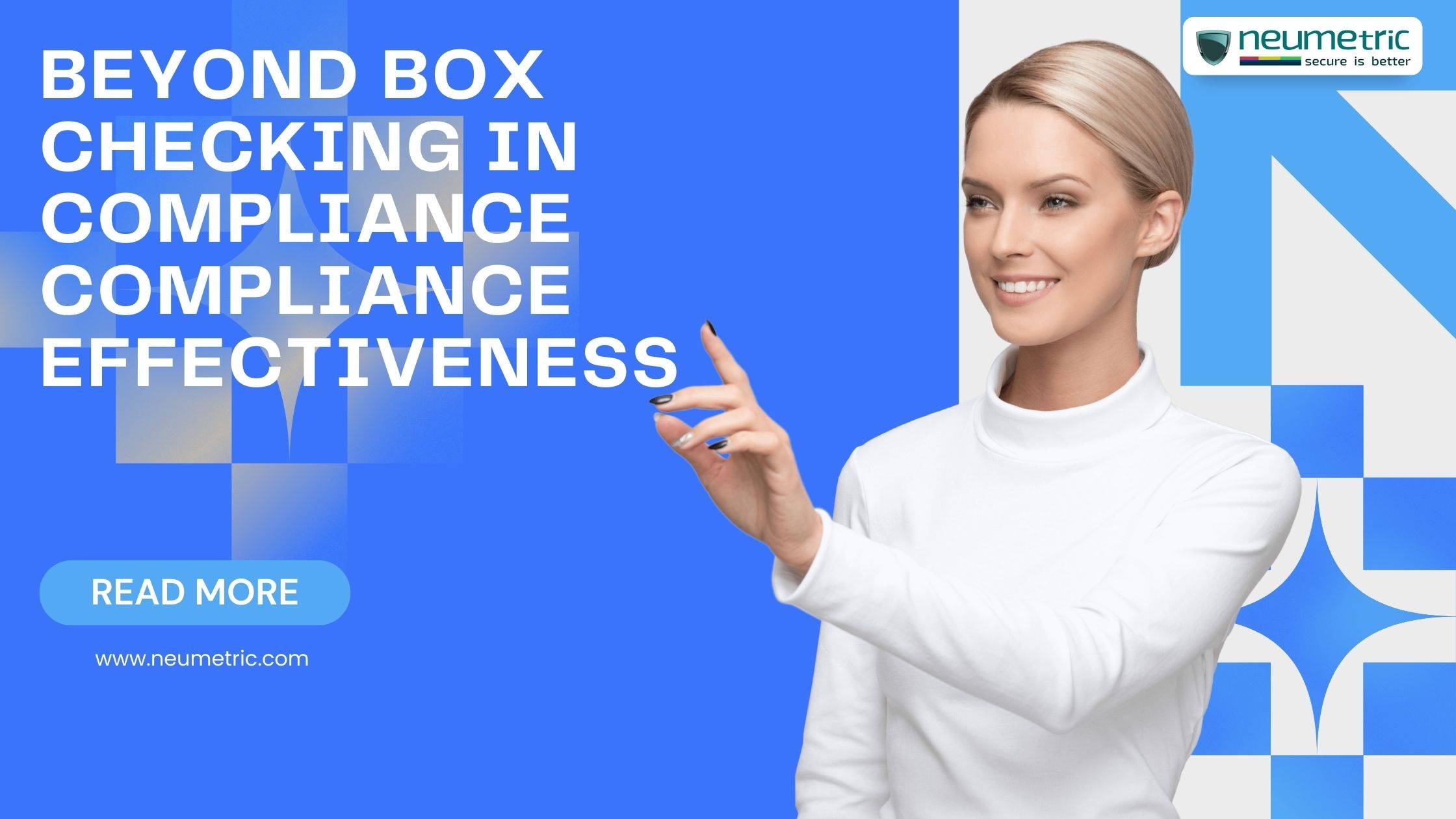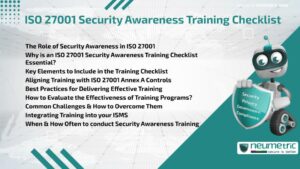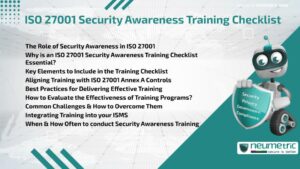Table of Contents
ToggleIntroduction
Compliance, in its essence, embodies the set of rules, regulations & standards that businesses & organisations must adhere to in their operations. It ensures conformity with legal requirements, industry standards & ethical practices relevant to their field. Traditionally, compliance often revolved around a tick-box mentality, merely ensuring that the necessary steps were completed without a deeper evaluation of their impact.
However, in recent times, there has been a monumental shift from this box-checking approach to a more nuanced & holistic concept known as “Compliance Effectiveness. ” This evolution signifies a fundamental change in perspective—a transition from mere procedural adherence to a comprehensive understanding & execution of compliance measures that go beyond superficial compliance.
The Shift from Box-Checking to Compliance Effectiveness
The paradigm shift from box-checking to compliance effectiveness is a pivotal change in how organisations approach regulatory compliance. While box-checking predominantly focuses on meeting the minimum requirements to avoid penalties or legal repercussions, compliance effectiveness delves into the actual efficacy & impact of these measures. It’s not just about following the rules but about ensuring these rules serve their intended purpose.
Importance of Effective Compliance Measures
The significance of effective compliance measures cannot be overstated. They form the bedrock of a trustworthy & sustainable business environment. Beyond merely fulfilling regulatory obligations, effective compliance measures contribute to:
1. Risk Mitigation: They act as a shield against potential risks, both legal & reputational, safeguarding the organisation’s interests.
2. Enhanced Reputation: A commitment to compliance effectiveness fosters trust among stakeholders—clients, investors & the public—bolstering the organisation’s reputation.
3. Operational Efficiency: By integrating compliance measures seamlessly into operations, businesses can streamline processes & enhance overall efficiency.
4. Ethical Framework: Compliance effectiveness aligns with ethical & moral values, emphasising responsible conduct & ethical decision-making within the organisation.
In essence, effective compliance measures transcend the mere checkbox exercise, transforming into a strategic asset that fortifies an organisation’s resilience & sustainability in an ever-evolving regulatory landscape.
Moving forward, exploring the nuances of this transition & unravelling the strategies for achieving compliance effectiveness will shed light on the transformative power & long-term benefits it holds for businesses & industries alike.
Understanding Compliance Effectiveness
Defining Compliance Effectiveness
Compliance effectiveness embodies a dynamic & proactive approach to regulatory adherence. It surpasses the traditional ‘checklist’ mindset by encompassing a more comprehensive & strategic outlook towards meeting regulatory requirements. At its core, compliance effectiveness ensures that adherence isn’t just a procedural exercise but a means to achieve broader organisational goals, mitigating risks & enhancing operational efficiency.
Differentiating Box-Checking from Effective Compliance
The distinction between box-checking & effective compliance lies in their fundamental approaches. Box-checking often revolves around meeting minimum requirements without genuine consideration for the impact or efficacy of those actions. It’s akin to completing tasks for the sake of compliance without understanding the ‘why’ behind them. On the other hand, effective compliance goes beyond the superficial. It involves a deeper understanding of regulatory requirements & an integration of these into the organisational fabric. Effective compliance isn’t about just ticking boxes; it’s about understanding the implications & actively implementing measures that genuinely serve the organisation & its stakeholders.
Metrics for Assessing Compliance Effectiveness
Assessing compliance effectiveness requires a comprehensive set of metrics that go beyond simple pass-fail criteria. Metrics could encompass various dimensions:
1. Risk-Based Metrics: These evaluate how well the compliance measures mitigate potential risks. It involves assessing the impact of compliance actions on reducing the likelihood & severity of risks.
2. Process Efficiency Metrics: Analysing how effectively compliance measures are integrated into the operational processes. This includes metrics that gauge the smooth integration of compliance checks without hindering productivity.
3. Cultural Adherence Metrics: Measuring the organisation’s culture of compliance—how well employees understand, accept & adhere to compliance norms. This metric delves into the ethical fabric of the organisation.
4. Performance against Regulatory Standards: Evaluating how well the organisation adheres to specific regulatory standards & benchmarks set by authorities.
5. Impact Metrics: Assessing the broader impact of compliance measures on the organisation’s reputation, customer trust & overall business success.
Employing a combination of these metrics helps in gauging the true effectiveness of compliance measures, allowing for a holistic evaluation beyond mere surface-level adherence. This comprehensive assessment is crucial in guiding continuous improvements & ensuring that compliance efforts align with the organisation’s strategic objectives.
Challenges in Achieving Compliance Effectiveness
Cultural Barriers within Organizations
One of the most substantial hurdles in achieving compliance effectiveness stems from cultural barriers within organisations. Often, there exists a disconnect between compliance requirements & the actual values & practices ingrained in the company culture. This misalignment can impede the seamless adoption & integration of compliance measures. Overcoming these barriers requires a top-down approach—leadership actively fostering a culture that not only respects but prioritises compliance as an integral part of the organisational ethos. It demands education, communication & a continuous effort to align the workforce with the importance & benefits of compliance.
Keeping Pace with Evolving Regulations
In an era of rapid regulatory changes & evolving standards, keeping abreast of these updates poses a significant challenge. Staying compliant isn’t a one-time task; it’s an ongoing process. Organisations must continuously monitor, interpret & adapt to these changes. However, this necessitates dedicated resources, expertise & a robust system that can swiftly incorporate new regulations without disrupting operations. Failure to keep up with these changes can expose businesses to unforeseen risks & compliance gaps.
Resource Allocation & Prioritization
Resource allocation & prioritisation present another obstacle in the pursuit of compliance effectiveness. Organisations often face constraints in terms of budget, manpower & time. Balancing compliance requirements with other operational needs becomes a delicate juggling act. Deciding where to allocate resources—whether to invest in technology, training, or manpower—poses a constant challenge. It demands strategic decision-making to ensure that essential compliance measures are adequately resourced without compromising other critical areas of the business.
Navigating these challenges requires a proactive & strategic approach. Overcoming cultural barriers, staying ahead of regulatory changes & optimising resource allocation necessitate a concerted effort, strategic planning & a commitment to embedding compliance effectiveness into the organisational DNA. Addressing these challenges is pivotal in achieving not just compliance but also reaping the full benefits of an effective compliance framework.
Strategies for Enhancing Compliance Effectiveness
Building a Compliance-Centric Culture
Leadership’s Role in Fostering a Compliance Culture
Leadership plays a pivotal role in shaping organisational culture. Executives & managers must not only advocate for compliance but embody it in their actions & decisions. When leaders prioritise & actively participate in compliance efforts, it sends a clear message throughout the organisation that adherence to regulations is non-negotiable. Their commitment sets the tone for the entire workforce, encouraging a culture where compliance isn’t just a requirement but a fundamental value.
Employee Training & Awareness Programs
Education & awareness are the bedrock of a compliance-centric culture. Implementing comprehensive training programs equips employees with the knowledge & tools needed to understand the importance of compliance & its implications in their daily roles. Engaging & interactive training sessions, coupled with regular updates on regulatory changes, empower employees to make informed decisions & actively contribute to the organisation’s compliance efforts.
Leveraging Technology in Compliance Management
Role of AI & Automation
In today’s dynamic regulatory landscape, technology serves as a powerful ally in compliance management. Artificial Intelligence [AI] & automation streamline processes, augmenting efficiency, accuracy & scalability in compliance tasks. AI-powered systems can sift through vast amounts of data, identify patterns & flag potential risks, significantly reducing the margin for error. Automation not only enhances accuracy but also frees up human resources to focus on more complex compliance matters.
Implementing Robust Compliance Software
Deploying robust compliance software tailored to the organisation’s needs is essential. Such software centralises compliance activities, providing a cohesive platform for monitoring, reporting & managing various compliance requirements. From document management to tracking regulatory changes, a well-integrated compliance software solution ensures a systematic approach to compliance management, facilitating smoother audits & proactive risk mitigation.
Continuous Monitoring & Adaptive Compliance Measures
Real-time Risk Assessment & Mitigation
Embracing real-time risk assessment tools allows organisations to swiftly identify & mitigate potential risks. Continuous monitoring mechanisms enable proactive identification of anomalies or deviations from compliance standards. This real-time approach empowers businesses to respond promptly, minimising the impact of non-compliance.
Agile Compliance Frameworks
Adopting agile compliance frameworks involves creating adaptable processes that evolve with changing regulations. Rather than rigid structures, these frameworks prioritise flexibility & responsiveness. They allow for iterative improvements, enabling organisations to adjust compliance measures swiftly in response to regulatory changes or emerging risks.
Implementing these strategies—cultivating a compliance-centric culture, harnessing technology & embracing adaptive monitoring—positions organisations to not only meet compliance requirements but also proactively navigate the complexities of the regulatory landscape, ensuring sustained compliance effectiveness.
The Future of Compliance: Trends & Predictions
Regulatory Trends Shaping Compliance Strategies
The future of compliance is intricately tied to the evolving regulatory landscape. One notable trend is the increasing complexity & breadth of regulations across industries. Regulators are focusing on data privacy, cybersecurity, environmental sustainability & ethical business practices more than ever before. Keeping pace with these regulations demands a proactive approach, where compliance strategies aren’t just reactive but anticipate forthcoming regulatory shifts.
Moreover, we’re witnessing a global convergence of regulatory standards. International regulations, such as GDPR in Europe, have set precedents for data protection worldwide, influencing how businesses handle data globally. This trend emphasises the need for a standardised approach to compliance, irrespective of geographical boundaries.
Innovations in Compliance Technologies
Technology is the driving force behind the future of compliance. Innovations like AI, machine learning & blockchain are revolutionising compliance management. AI-powered systems can analyse vast datasets, enabling predictive compliance analytics & risk assessment. Blockchain, with its immutable & transparent nature, is being explored for regulatory reporting & ensuring data integrity.
Furthermore, RegTech [Regulatory Technology] solutions are emerging as game-changers. These specialised technologies streamline compliance processes, offering efficient data management, real-time monitoring & automated reporting. The integration of these technologies will redefine how organisations approach compliance, making it more efficient, accurate & adaptable.
The Role of Compliance in Corporate Sustainability & Social Responsibility
Compliance is no longer confined to legal & regulatory boundaries; it intersects with corporate sustainability & social responsibility. Businesses are recognizing the need to align compliance efforts with broader ethical & environmental goals. Ethical business conduct, environmental stewardship & social impact are becoming integral components of compliance frameworks.
In essence, compliance is evolving beyond a mere adherence to rules; it’s becoming a catalyst for ethical business practices & sustainable operations. Companies that embrace compliance as a tool for social responsibility not only mitigate risks but also build trust, enhance reputation & contribute positively to society.
As we move forward, the convergence of these trends will shape the future landscape of compliance, necessitating a proactive & integrated approach that goes beyond meeting regulatory obligations to encompass broader ethical & societal responsibilities. Organisations that anticipate & embrace these shifts will thrive in a complex & interconnected global business environment.
Conclusion
In navigating the intricate world of regulations & standards, the essence of compliance has transformed from a mere checklist to a strategic imperative—compliance effectiveness. Throughout this exploration, it’s evident that compliance effectiveness transcends the routine adherence to rules; it’s about creating a culture where compliance is ingrained in the DNA of an organisation.
Compliance effectiveness isn’t just about avoiding penalties or legal entanglements; it’s a cornerstone of trust, sustainability & resilience. It mitigates risks, enhances operational efficiency & safeguards an organisation’s reputation. By fostering a compliance-centric culture, leveraging technology & adapting to evolving regulatory landscapes, businesses pave the way for not just meeting requirements but excelling in ethical & responsible practices.
Final Thoughts on Navigating Towards Enhanced Compliance Measures
As we move forward, the journey towards enhanced compliance measures demands a proactive, adaptive & integrated approach. It’s about embracing change, aligning with ethical principles & integrating compliance into the fabric of every business operation. Leaders play a pivotal role in championing this transformation, fostering a culture where compliance isn’t perceived as a burden but as a strategic advantage.
Continuous education, innovation & a commitment to staying abreast of regulatory trends are essential. Compliance isn’t a destination; it’s an ongoing journey—one that requires dedication, collaboration & a genuine commitment to ethical conduct & social responsibility.
In essence, the pursuit of compliance effectiveness isn’t just about meeting the rules; it’s about shaping a future where businesses operate ethically, responsibly & sustainably. It’s about building trust, contributing positively to society & securing a place in an ever-evolving & interconnected global landscape. As we embrace these principles, we pave the way for a future where compliance isn’t a burden but a catalyst for positive change.
FAQ
Why is compliance effectiveness more than just following rules?
Compliance effectiveness isn’t just about ticking boxes to meet regulations. It’s a deeper commitment to ensuring that these rules actually serve their purpose. It’s about embedding compliance into the core values of an organisation, fostering a culture where ethical practices & regulatory adherence go hand in hand. It’s not just about avoiding trouble; it’s about doing what’s right & ensuring sustainable, trustworthy operations.
How can technology improve compliance effectiveness?
Technology plays a pivotal role in enhancing compliance measures. Innovations like AI, automation & specialised compliance software streamline processes, making them more efficient & accurate. AI-powered systems can analyse vast amounts of data to identify risks, while compliance software centralises compliance activities, simplifying monitoring & reporting. These technologies not only save time but also allow for proactive risk mitigation, ensuring compliance measures are robust & up to date.
What role does compliance play in the broader context of corporate responsibility?
Compliance isn’t just about meeting legal obligations; it intersects with corporate sustainability & social responsibility. It’s about businesses operating ethically, being accountable to society & making a positive impact. By integrating compliance with broader ethical & environmental goals, companies can build trust, enhance their reputation & contribute positively to their communities. Compliance, therefore, becomes a tool not only for risk management but also for fostering a culture of responsible business practices.





